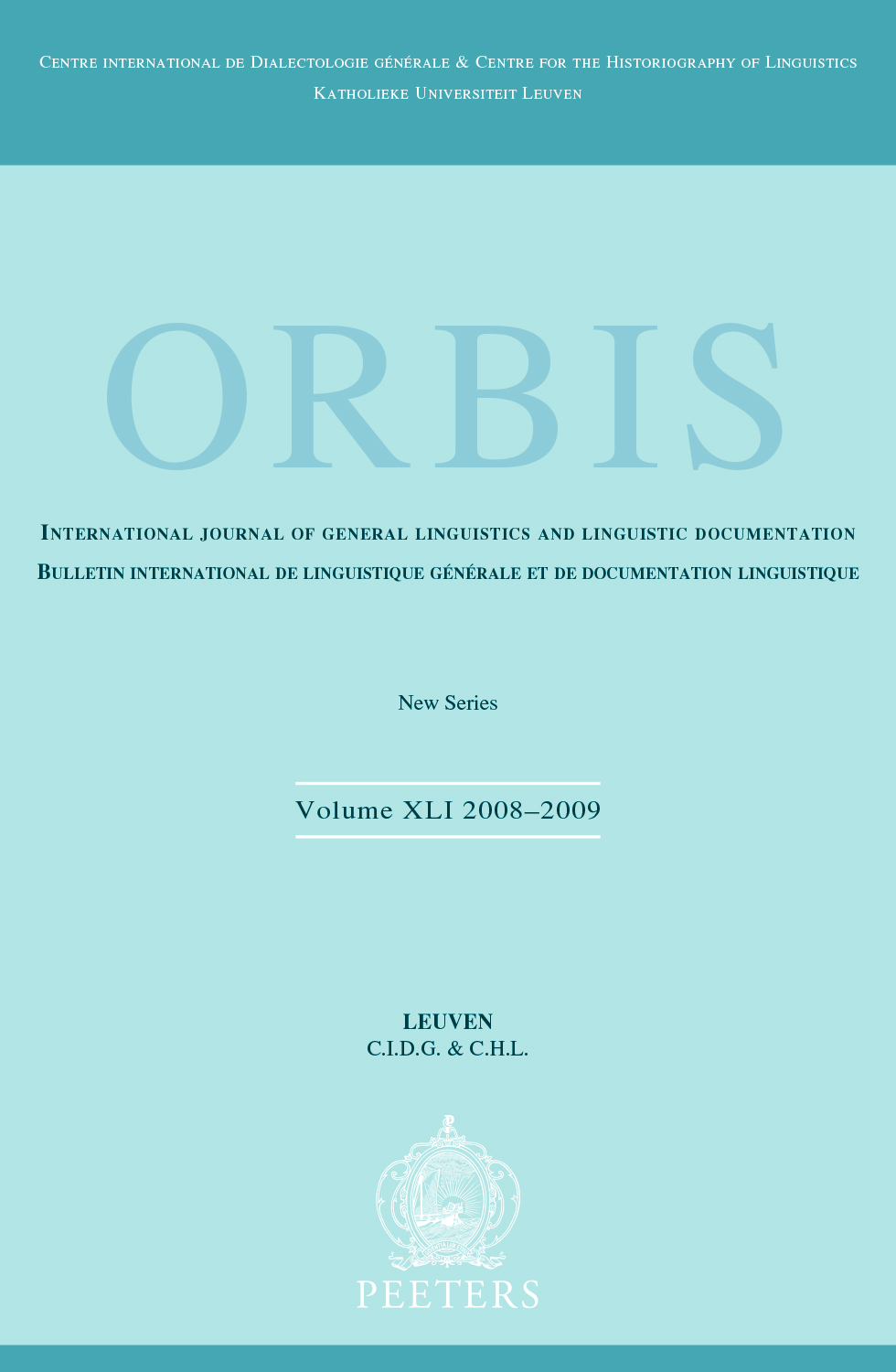 previous article in this issue previous article in this issue | next article in this issue  |

Preview first page |
Document Details : Title: George Dalgarno and John Ray on the Doctrine of the Letters Author(s): CRAM, D. Journal: Orbis Volume: 40 Date: 1998 Pages: 135-146 DOI: 10.2143/ORB.40.1.505042 Abstract : Descriptions of English pronunciation produced by orthoepists of the Renaissance are remarkable for their observational detail, and offer a rich resource of phonetic data for the study of dialect variation and language change. These works were surveyed in E.J. DOBSON’s book entitled English Pronunciation 1500–1700, which appeared in 1957, and they have been the object of various studies in the intervening years1. But orthoepy in the mid-17th century is also remarkable for its theoretical sophistication. It is fully informed by the classical doctrine of the letters, the “letter” being an abstract element analysed in terms of its name, figure and power. Furthermore, these traditional ideas are enriched and elaborated in the context of universal language schemes. A convenient survey of the relevant issues from a 17th-century point of view, referring both to classical and contemporary authors, can be found in the well-footnoted chapter on orthography in John WILKINS’s Essay Towards a Real Character (1668). In fact I should declare at the outset that this paper is as much about universal language schemes as it is about phonology and phonetics in their own right, and is a continuation of an earlier paper (CRAM 1991) concerning the “alphabet of simple ideas”, a way of thinking about a philosophical language which links George DALGARNO with Seth WARD, John WALLIS and LEIBNIZ. The notion of an alphabetof simple ideas can be taken as a metaphorical way of indicating that the set of simple notions to which all complex ones might be reduced are perhaps as few in number as the letters of the alphabet. However, it is clear from DALGARNO’s work (DALGARNO 1661; 1680) that the idea of an alphabet of simple notions can also be taken at face value, and that there is a non-trivial parallel between the analysis of speech into “simple” letters and the analysis of thought into “simple” notions. In the first part of the paper I shall sketch out the theoretical framework by exploring 17th-century reception of the doctrine of the letters, and more particularly the idea of a “simple” letter, within the framework of universal language schemes. In the second part of the paper I shall then consider two concrete instances where there were conflicting opinions regarding the analysis of letters as simple and compound, and which reveal contrasting methods of argumentation which are peculiar to the 17th century. |
|


